Warehouse
Closed
July 10, 2026
Judging
Date
July 26, 2026
Winners
Announced
August 12, 2026
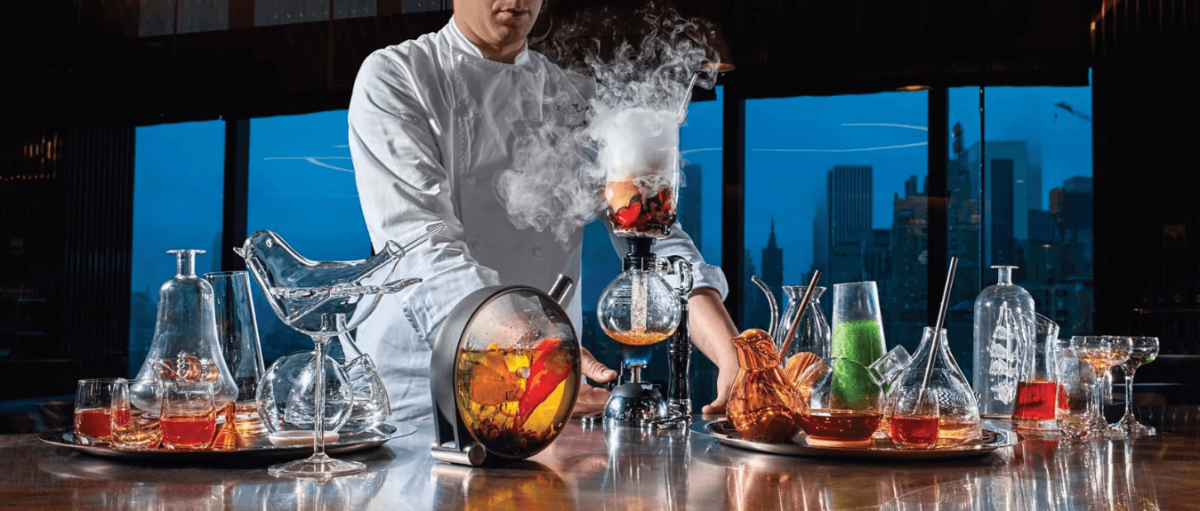
The first sip of a cocktail is more than just a taste; it’s a full sensory event. A smoky aroma lingers in the air, the chilled glass sends a signal through the fingertips, ambient music hums in the background, and a carefully chosen garnish visually teases the senses. The tongue detects bitter and sweet, but the mind constructs the flavor experience. Every sensory channel contributes to how a cocktail is perceived. This insight lies at the heart of neurogastronomy, the science of how the brain interprets and constructs flavor through the interaction of multiple senses. It challenges the assumption that taste is confined to the mouth, demonstrating that the perception of flavor arises from a complex interplay of sight, sound, smell, texture, and emotion.
For bartenders, this is a revelation. It means that every detail in a drinking experience can be engineered for maximum impact. You are not merely serving a liquid; you are shaping a cognitive event. This article explores how neuroscience principles can be applied at the bar to craft immersive, multi-sensory cocktails that not only please the palate but also captivate the brain.
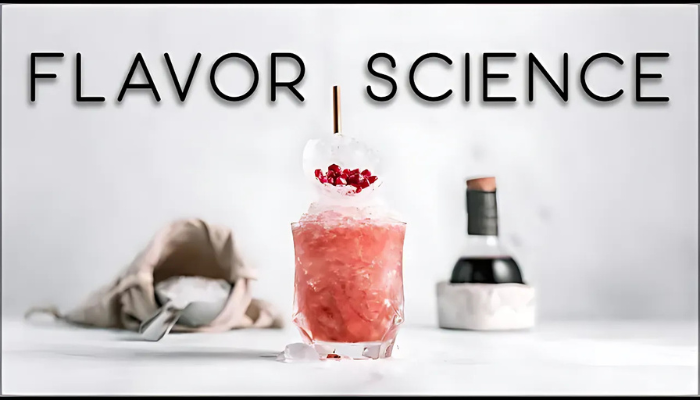
Source: Truffles On The Rocks
Flavor isn’t locked in the glass; it’s constructed in the brain. While the tongue detects sweet, sour, salty, bitter, and umami flavors, the full experience of flavor also includes the senses of smell, sight, sound, and touch. This integration happens quickly and often subconsciously. For example, studies have shown that the same wine tastes sweeter under red light and more acidic under blue light. Another famous experiment found that adding the crunching sound of biting into a chip made it seem fresher. Why? Because the brain constantly blends sensory data and fills in the gaps with expectations. For bartenders, this means that changing one sensory input, such as color or sound, can shift how a drink tastes, even if the recipe remains the same.
We drink with our eyes first. The color of a cocktail sends powerful signals to the brain. A red or pink drink often suggests sweetness. Green hints at sourness or freshness. A dark brown or black drink primes the brain for bitterness or depth. Glassware also plays an important role. A coupe glass communicates elegance and delicacy; a tiki mug screams tropical fun. Garnishes add further cues; a sprig of rosemary might suggest savory, while a dehydrated citrus wheel hints at tartness or complexity.
Lighting seals the deal. Warm lighting tends to enhance perceptions of sweetness and comfort, while cooler tones can emphasize crispness or bitterness. If you're aiming for a cozy, sweet cocktail experience, dimming the lights and playing with warm hues can elevate the flavor without touching the recipe. In this way, the drink’s visual presentation becomes an integral part of the recipe itself. Matching or even deliberately contrasting color, garnish, and lighting with the drink’s flavor profile allows bartenders to guide perception before the first sip.
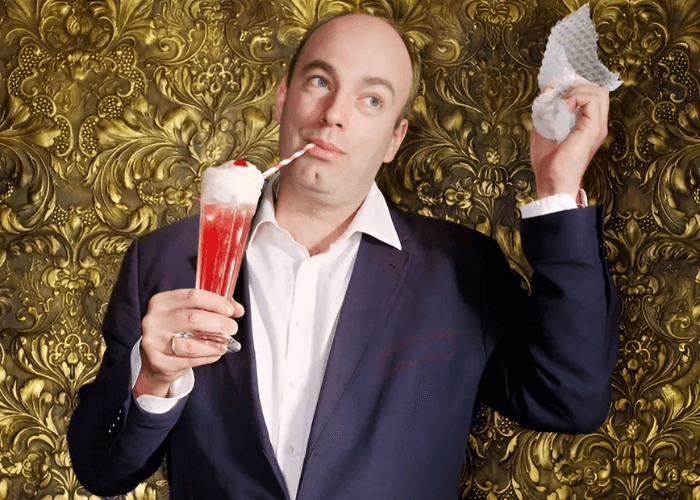
Source: Donatella Cinelli Colombini
The sounds around a cocktail can literally season it. Research led by Professor Charles Spence at Oxford shows that high-pitched sounds amplify sweetness, while low-pitched or bass-heavy sounds boost bitterness. This means the background playlist can influence how a drink tastes.
Genre matters as well; a slow jazz soundtrack can make a cocktail feel smoother, more luxurious. High-energy electronic music may make drinks taste punchier or more acidic. Even ambient noise like the clink of ice, the pop of a cork, or the fizz of carbonation contributes to the drink’s perception. That’s why bartenders should curate playlists to match the cocktail menu with intent. Want to highlight a chocolatey espresso martini? Introduce some warm, mellow bass tones. Trying to enhance a crisp, floral spritz? Opt for airy, high-pitched tracks. These auditory pairings don't just set the mood; they actively sculpt how a cocktail is experienced.
The texture isn't just physical, it's emotional. A silky, viscous cocktail feels indulgent, while a cold, bubbly one delivers a crisp sense of refreshment. The brain reads these textures as flavor cues, influencing how we perceive sweetness, acidity, and even temperature.
Temperature, carbonation, and viscosity all shape mouthfeel. A velvety clarified milk punch might taste sweeter than a sharp, cold gin and tonic, despite identical sugar content, because of how it coats the mouth. Bartenders can use this to their advantage by designing mouthfeel as intentionally as they design flavor. Consider shaking versus stirring, adding whipped foam, or garnishing with crunchy elements like candied ginger or a rim of smoked salt. The goal is to think tactile: what do you want guests to feel in their mouth? The texture doesn’t just add contrast, it transforms the overall sensory impact of the drink.
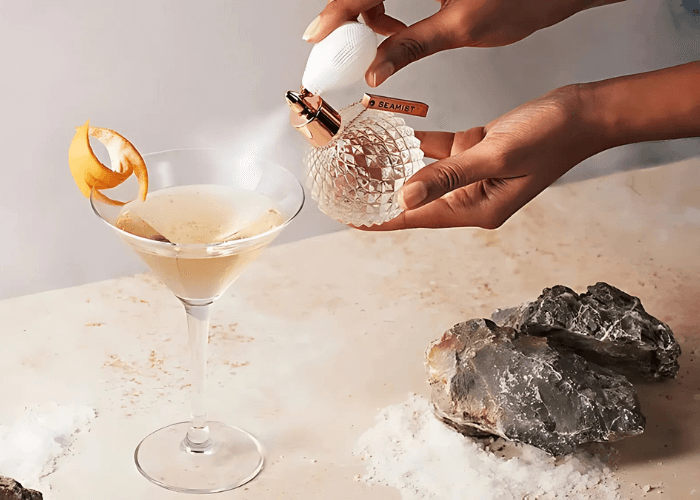
Source: Robb Report
We think we taste the flavor, but we mostly smell it. About 80% of what we call taste comes from retronasal olfaction, smells that travel from the mouth up the nasal cavity as we chew or sip. This means that great bartenders are, in effect, olfactory designers. They use aromatic cues such as singed rosemary, expressed citrus peel oils, or a subtle puff of smoke to flood the brain with sensory input before the liquid even touches the tongue. These carefully chosen scents set the stage and frame the flavor, amplifying sweetness, bitterness, or complexity depending on their placement and strength. That’s why it's essential to present aromas right at the nose, using wide glasses that capture and deliver scent, incorporating aromatic garnishes that rest close to the rim, or even misting essential oils across the top of the cocktail to ensure each sip arrives within a curated cloud of scent.
Flavor is also memory, shaped as much by emotion and context as by ingredients. The brain compares every new taste to a catalog of past experiences, and subtle cues, like a drink's name or the story that comes with it, can dramatically alter what we think we taste. For example, a cocktail labeled “Grandma’s Pie” might evoke warmth, sweetness, and nostalgia, while the same drink named “Bitter Truth” might feel sharper, and more introspective. Menus, bar decor, and bartender storytelling aren’t just garnish; they are fundamental parts of the flavor experience. That’s why it’s crucial to use narrative as a design element. Describing a cocktail as “crisp and citrusy with a warm finish” doesn’t just inform the palate, it gives the brain a roadmap, priming perception, and guiding expectation from the very first glance.
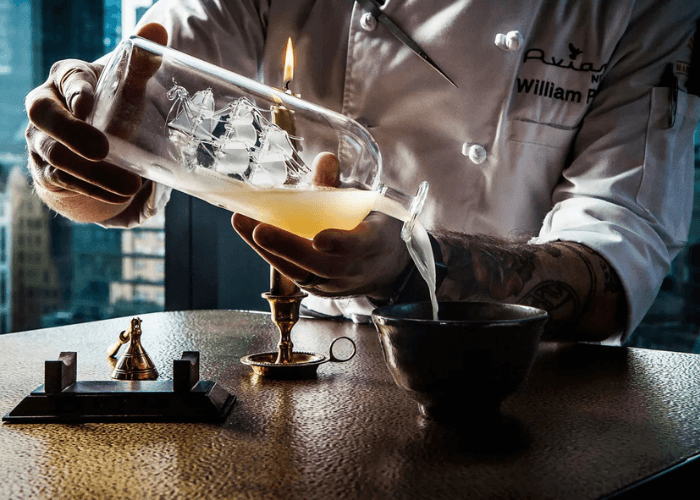
Source: Punch
Across the United States, a growing number of bars are pioneering the application of neurogastronomy to craft immersive, multi-sensory cocktail experiences. These venues are redefining what it means to drink, transforming each glass into a cognitive journey. At Double Chicken Please in New York City, cocktails are conceptualized like culinary dishes, presented with theatrical flair, and layered with stories that guide the drinker's expectations. The Aviary in Chicago treats drinks like high-concept installations, engineering them with auditory, olfactory, and tactile cues that reframe how each element is experienced. In San Francisco, Trick Dog continuously reinvents its menu around thematic narratives and visual storytelling that shape taste through expectation. Meanwhile, The Dead Rabbit in New York seamlessly merges Irish bar heritage with immersive atmospheres, combining scent, sound, and set design to deepen flavor perception. Similarly, Katana Kitten, also in New York, blends a high-energy atmosphere with detailed sensory layering, balancing vibrant visuals and music with traditional Japanese hospitality to create immersive, story-driven drinks that linger in both taste and memory. These establishments don’t just serve cocktails, they engineer perception. Their success underscores the potential of neurogastronomy to move the industry beyond taste into the territory of full sensory storytelling.
[[relatedPurchasesItems-54]]
The next time you craft a cocktail, remember you're not just building a drink, you're building a perception. Every element you choose sends signals through sight, sound, smell, touch, and memory, layering into one unified experience interpreted by the brain. Neurogastronomy teaches us that taste is not fixed, but flexible, malleable through the right sensory cues. By mastering how color, sound, texture, and aroma influence flavor, bartenders unlock the ability to make a drink taste sweeter without sugar, feel richer without cream, or seem more vibrant without changing a single drop. If you already know how to balance spirits, acid, and sweetness, it’s time to level up. Use lighting to frame the mood, curate music to support the profile, design glassware to reinforce mouthfeel, and name drinks to prime memory and expectation. The bar becomes not just a space for service, but a laboratory of perception. Great cocktails don’t live solely on the tongue; they are built in the mind, and with intention, they linger far beyond the final sip.
Header image source: The New Yorker
Also Read:
Cocktail Failures That Made It Big: Learning From Accidental Hits
The Art of Mixology: Molly Horn on Innovation and Spirits Education
Optimizing Cocktail Menu for Profitability with Samantha Lindquist
The 2025 Winners List is Now Live! Explore the Full List!